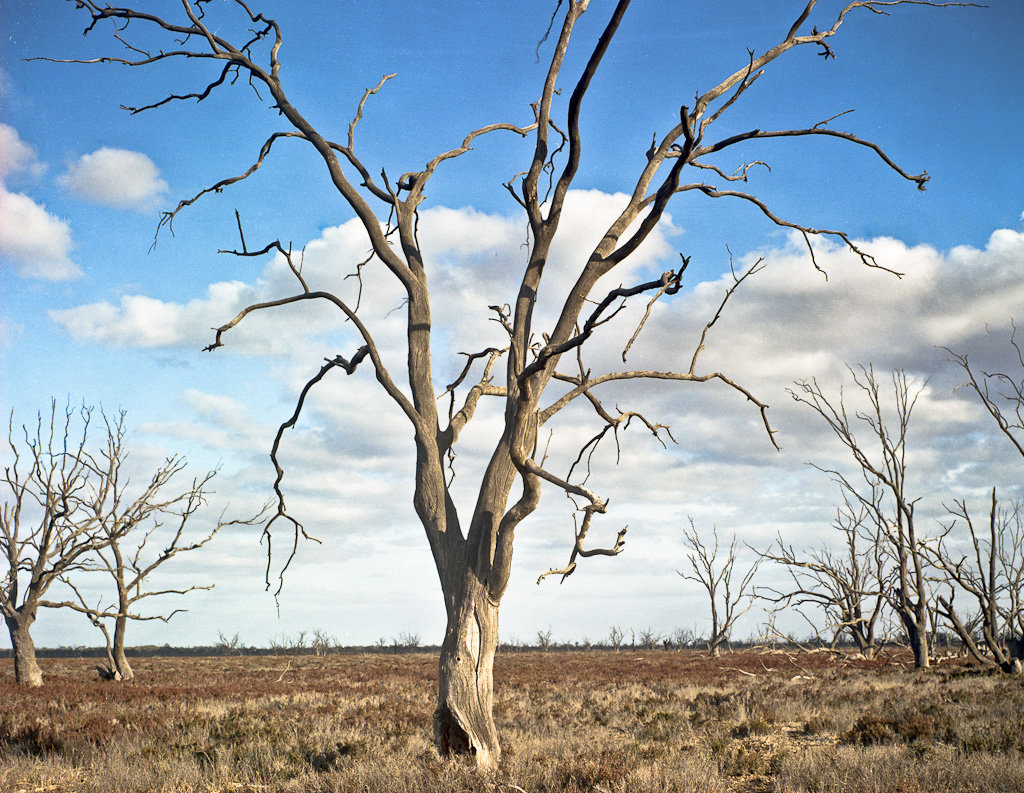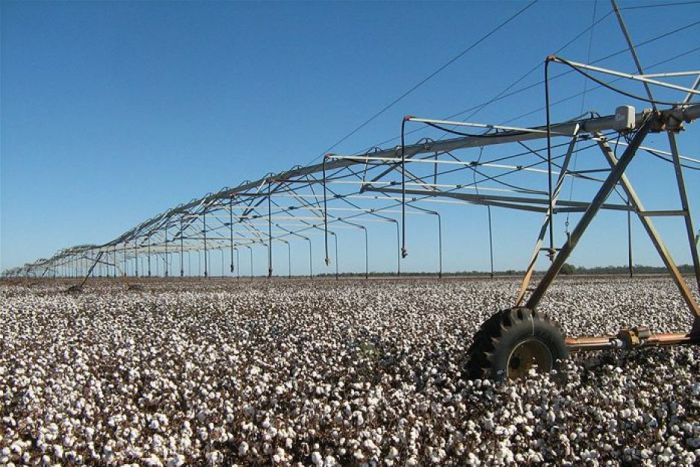Barwon-Darling River faces ‘collapse’ from government mistakes: report

Immediate changes are needed to avoid the “collapse” of Australia’s longest river system, with a government agency finding over-extraction brought forward drought conditions for parts of the river by three years.
In a highly critical draft review of the 2012 water sharing plan for the Barwon-Darling, released on Wednesday, the NSW Natural Resources Commission found the riverine ecosystem to be “in crisis”.
Some aquatic species “will take decades to recover, if they recover at all”, it said, blaming in part changes that allowed irrigators greater extraction rights. Cotton alone used about 1 trillion litres in the five years to 2015-16.
“There is clear evidence to indicate that the [water-sharing] plan rules are resulting in more frequent and longer cease-to-flow periods,” said the report, which covers an area from Mungindi on the Queensland border to just south of Wilcannia in far-western NSW.
The commission makes 17 recommendations aimed at promoting three stages of reform. The first priority, though, should be for “an open, evidence based, and independently peer reviewed process to develop a new plan”.
The report comes at a time when most of NSW and other parts of the Murray-Darling Basin are facing an intensification of drought with little immediate relief predicted in coming months at least.
Many towns are facing tight water restrictions, important wetlands are drying out and many farmers are facing limited, if any, water allocations for the current year. Residents of Menindee on the lower Darling fear a return of mass fish kills this summer.
 ‘Scathing’ report
‘Scathing’ report
The Berejiklian government should make “immediate” changes to the plan by next year “to rebuild social licence for water management in local communities” as the first stage of suggested changes, the report says.
The NSW Department of Planning, Industry and Environment should then remake the plan by July 1, 2023, when the current one expires, and it should also review upstream water sharing plans that affect the Barwon-Darling, it said.
Kate Smolski, chief executive of the NSW Nature Conservation Council, said it was a “scathing report which places the blame for the ecological catastrophe we have seen unfold in the Darling squarely at the feet of the NSW government for allowing over extraction by upstream irrigators”.
“The report also highlights the devastating effect that climate change will have on water availability in the catchment,” Ms Smolski said. “It is clear that a comprehensive review of climate change impacts on water availability across the entire Murray-Darling Basin is needed.”
A commission spokesman said climate change “was not effectively addressed” in the 2012 plan.
“Latest CSIRO best estimates of climate change show that while rainfall predictions are highly uncertain temperatures will increase and evaporation rates will increase,” he said.
“In-flows to the Barwon-Darling are likely to decline in the future, resulting in a 10 per cent reduction in end-of-system flows by 2030.”
‘Near-criminal’
Jodi McKay, NSW Labor leader, told reporters the handling of the Barwon-Darling was “near-criminal”, and said the report was a “significant indictment of the management of water by the National Party in this state”.
“We’ve always said National Party ministers shouldn’t be in charge of water”, Ms McKay said.
A spokeswoman for Melinda Pavey, the water minister, said the government would review the draft and respond to its recommendations when the report is finalised in September.
“The government has embarked on significant water reform over the past 12 months as was recognised by the NRC in the report,” she said.
‘Water is critical to everyone in our western NSW communities and their feedback on the draft report will be integral to how we respond to the recommendations.”
Ms Pavey’s predecessor, Niall Blair, said “at no time during my time as water minister, did I shy away from the hard decisions”.
He cited his move to bring forward the review of the plan by several years, the greater protection of environmental water, and the establishment of the Natural Resources Access Regulator as examples of those measures.
Roy Butler, the Shooters, Fishers and Farmers Party member who won the seat of Barwon during the March state election, said the existing plan may have a 40 billion litre a year hole in terms of over-allocated water.
What’s needed now was a careful overhaul of the plan “based on the best scientific evidence we can find”, not “populist slogans for more dams”, Mr Butler said.
Comment has been sought from Energy and Environment Minister Matt Kean and from the NSW Irrigators Council.
‘Appropriate’ urgency
Among key recommendations that matched those of his report included modifying water access arrangements to protect low flows, maintaining connectivity of the rivers and protecting environmental flow, Professor Vertessy said.
The failures of the current plan include the lack of ecological targets and a failure to allocate water in line with Native Title for the river known as the Barka to the indigenous community.
For its part, the Murray-Darling Basin Authority said it did not have powers to assess the water-sharing plan because it was made before the wider basin plan came into force.
“The MDBA welcomes the findings and looks forward to seeing the new Water Resource Plan for the Barwon-Darling give effect to these important recommendations,” a spokeswoman said.
Originally published by The Sydney Morning Herald, 24 July 2019.

